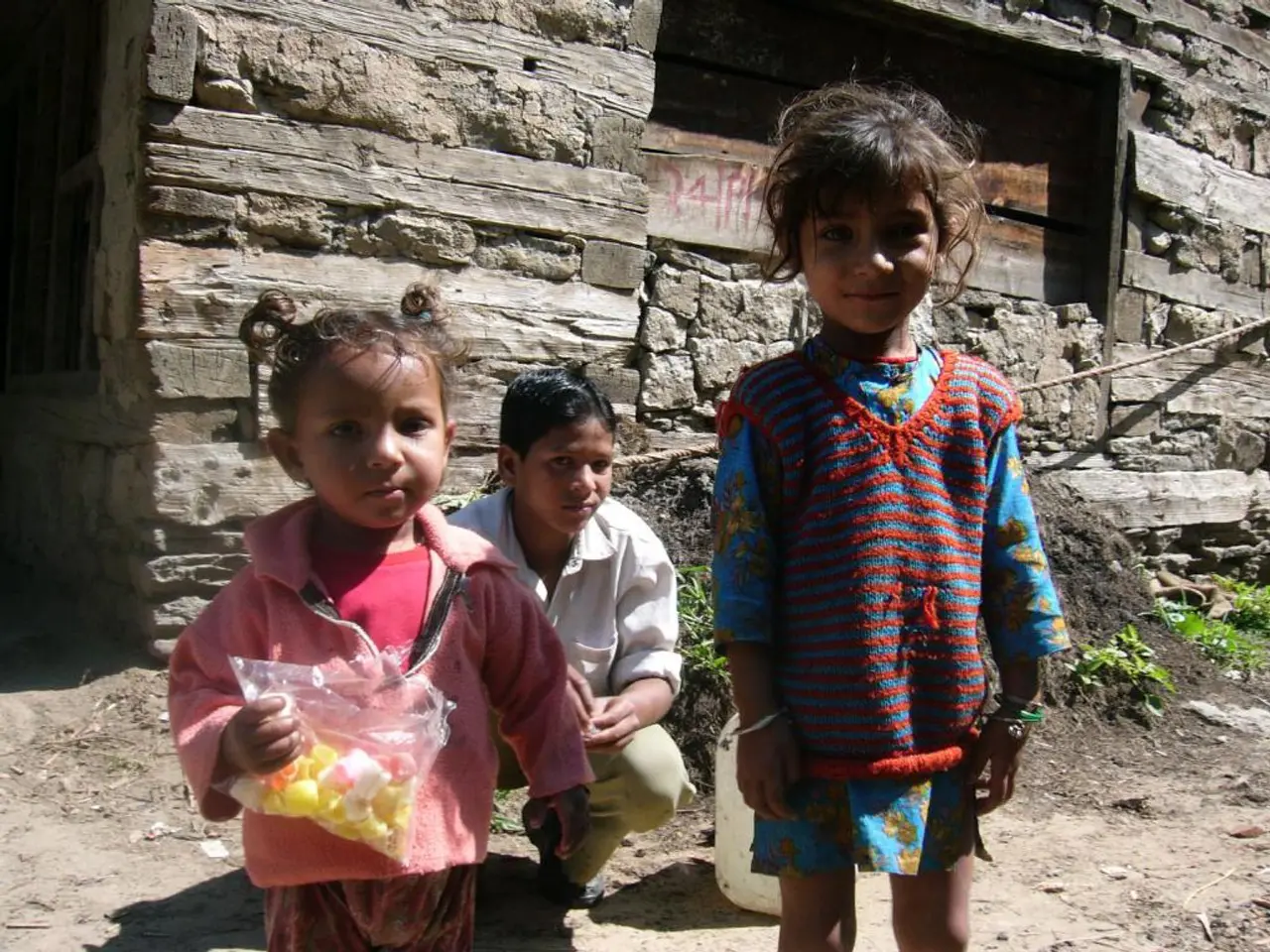Putting a Growth Mindset in Motion: A Parent's Guide to Raising Resilient, Resourceful Kids
Steps to Foster a Developmental Mindset in Your Child's Growth Process
Giving your child the tools they need to navigate life's twists and turns is one of the greatest gifts a parent can provide. By cultivating a growth mindset-the belief that intelligence, abilities, and skills can be developed with effort-you're setting the stage for a lifetime of determined, adaptable, and curious individuals. In an ever-evolving world, kids with a growth mindset aren't just more likely to achieve their goals, but they also learn how to conquer setbacks with style. Here's a straight-up, easy-to-digest guide with practical steps to help your kiddo grow into a blossoming, empowered young person.
Why Encouraging a Growth Mindset Matters
Mindset Matters in Child Development
Mindset dramatically influences a child's actions, motivation, and determination to keep pushing when things get tough. Study after study has shown that kids who develop a growth mindset regard mistakes as opportunities for improvement[3]. This outlook promotes a can-do attitude, boosts academic achievement, and builds emotional resilience[1]. A fixed mindset, in contrast, views abilities and talents as set in stone, causing children to shy away from challenges and fear failure[2].
Fixed Mindset vs Growth Mindset: Key Differences
A fixed mindset centers around the idea that someone's abilities, intelligence, and talents are unchangeable, often leading to a avoidance of tasks that may result in anything less than certain success. On the other hand, a growth mindset embraces the notion that skills and intelligence can be developed and honed through effort, learning, and persistence. It encourages children to daringly face challenges and learn from setbacks[3].
Lifelong Benefits of a Growth Mindset
Adopting a growth mindset early on sets the stage for a lifelong dedication to learning, setting your child up for success in and out of the classroom. Beyond excelling academically, a growth mindset helps kids navigate the complexities of life, proving invaluable in moments when growth pushes beyond the classroom.[4]By nurturing a growth mindset, parents serve as a catalyst for fostering resilience, adaptability, and a love for learning that will stick with their child for a lifetime.
Laying the Groundwork for a Growth Mindset
What is a Growth Mindset?
A growth mindset is the idea that intelligence, abilities, and skills can be developed through hard work, dedication, and the right strategies. It's not about being the best, but about striving to do better with every one-on-one match against yourself[3]. It's all about embracing the learning process rather than just the outcome.
Core Principles of Growth Mindset Thinking
The growth mindset revolves around a few key principles: eagerly taking on challenges, learning from criticism, appreciating effort, and finding inspiration in others' success[3]. Embracing these principles helps kids approach growth as an ongoing process instead of a fixed destination. Rather than fearing failure, kids with a growth mindset view failure as a stepping stone on the path to success.
Common Misconceptions When it Comes to Growth Mindset
Some people believe that a growth mindset is just about encouragement to "try harder." However, effort alone is useless without the right tools, a keen willingness to learn from feedback, and the ability to adapt strategies. Another mistake is the belief that embodying a growth mindset means never experiencing self-doubt and discouragement. The truth is, cultivating a growth mindset involves recognizing self-doubt and choosing to persevere despite it.[3]
Diagnosing a Fixed Mindset
Signs of a fixed mindset include behaviors like avoiding challenges, giving up easily, disregarding feedback, and envying others' success[4]. Watch out for phrases like "I'm just not good at this" and "I can't do it" to identify a fixed mindset. Recognizing these signs is the first step toward nurturing a more growth-oriented approach in your child.
Step 1: Praise Effort, Not Perfection
Why Effort Should Win Our Cheers
Celebrating effort teaches kids to value the learning process over the end result. When effort is celebrated, children feel motivated to work harder, take risks, and stick with difficulties[4]. This sense of motivation helps them realize that success isn't defined by being perfect, but by striving for improvement.
The Role of Praise in Nurturing a Growth Mindset
Effective praise highlight's a child's efforts and strategies. Instead of saying "You're so smart," say "I'm impressed with how you tried different strategies to solve that problem." This type of praise motivates kids to appreciate their own development and reinforces the idea that their efforts drive success[4].
The Difference Between Effort-Based vs. Outcome-Based Praise
Effort-based praise: "I noticed how hard you worked on that project; you didn't give up even when it was tough."
Outcome-based praise: "You got an A; you're so smart."
A shift towards effort-based praise encourages kids to associate success with hard work instead of inherent talent.
Tips for Transitioning from Outcome to Effort Praise
Start by discussing the process instead of the end result. Ask your child, "What was the hardest part about completing this project?" or "What did you do differently that you think helped you come up with the right answer?" These conversations emphasize the learning process and reinforce the idea that progress is gradual and ongoing.[4]
Strategies for Cultivating a Love for the Learning Process
Encourage your child to keep a growth journal where they log moments of learning, challenges they've conquered, and areas they want to work on. Let them set their own learning goals, even if they seem lofty, and help them break these goals into smaller, attainable steps. This exercise emphasizes effort and progress, fueling a love for the learning process in your child.[5]
Step 2: Master the Magic of the Word "Yet"
The Power Language Has in Shaping Mindset
Words carry an immense amount of weight, and using "yet" when discussing challenges can dramatically alter a child's perspective from one of limitation to possibility. Instead of "I can't do this," encourage "I can't do this yet." This simple phrase frees kids from the constraints of believing they possess an immutable set of abilities and shifts their focus to the idea that growth is always an option.[4]
How Using "Yet" Can Transform a Fixed Mindset
"Yet" shifts the focus from what kids can't do to what they're in the process of learning to do. It underscores the idea that abilities can evolve with time, effort, and guidance.[4]
Examples of Growth Mindset Phrases to Use With Your Child
Instead of "You're not good at math," say "You're still learning math skills, and I can see you're improving every day." Phrases like "You're making progress" and "Look how far you've come" emphasize effort and reinforce the idea that each day brings new opportunities for growth.[4]
Using "Yet" in Daily Conversations
Weave "yet" into day-to-day discussions to help kids understand that even tasks they currently struggle with aren't insurmountable roadblocks. For example, if your child struggles with handwriting, you might say "You've picked up on writing the letters in this word, but let's spend some extra time working on keeping the letters consistent and neat."[4]
Role-Playing Activities to Encourage Positive Language
Engage in role-playing games where you and your child take turns expressing frustration and responding with "yet" statements. This helps kids internalize the mindset and apply it to real-world situations.[5]
Turning Setbacks into Learning Opportunities with "Yet"
Show your child how to reframe setbacks as stepping stones on the road to mastery. Discuss the lessons learned from failures, the strategies they might apply differently next time, and what they'll take away from the experience that can help them in the future. [4]
Step 3: Don't Forget: Model a Growth Mindset Yourself
Be a Role Model: Children Imitate Their Parents
Children typically mimic the behaviors and attitudes of their parents, which makes demonstrating a growth mindset essential[5]. When you model resilience, perseverance, and the willingness to learn, you instill these qualities in your child, reaping dividends through their own growth and adaptability.
Your Reactions Affect How Your Child Navigates Challenges
Children pick up on how you respond to challenges. If you face adversity with a defeatist attitude, your child is likely to adopt a similar mindset. Conversely, when you approach challenges with optimism and determination, your child will learn from your example and face setbacks with more resilience.[6]
Sharing Your Triumphs and Trials
Don't shy away from discussing your own learning experiences, especially ones that were difficult. Explain how you managed to persevere through failure and explore the measures you took to keep pushing forward. Sharing these stories helps humanize the learning process while showing kids that setbacks don't have to derail progress.[7]
Practicing Growth Mindset Qualities
Employ growth-oriented language at home to normalize the idea that challenges and setbacks are a natural part of the learning process. Frame failures as opportunities for growth and learning rather than as evidence of personal inadequacies.[5]
Cultivating a Household of Growth Mindset Thinkers
Create a household culture that embraces a growth mindset by encouraging everyone to adopt the same language. Foster discussions about the role effort plays in success and, most importantly, champion the endless possibilities growth presents for every member of the family.[8]
Focusing on Continuous Learning and Improvement Together
Collaborate with your child to set goals that are both challenging and achievable. Break down these goals into smaller, manageable steps, and celebrate incremental progress along the way.[5]
Harvesting the Fruits of a Growth Mindset
Connecting the Dots: A Recap of the 5 Steps to Help Your Child Grow
Revisiting these 5 steps shows that parents can play a pivotal role in fostering resilience, adaptability, and a love for learning in their child. Each step builds on the others, engraining a foundation of belief in growth that will serve as a sturdy scaffold for success in their lives.[2]
Seeing How Each Step Aids in Your Child's Development
Every step-from praising effort to embracing challenges-helps to cultivate a mindset that views life as an evolving journey rather than a fixed destination. Combined, these steps lay the groundwork for your child's future resilience, adaptability, and eagerness to embrace new experiences.[2]
The Journey Continues: Continue Nurturing a Growth Mindset
Fostering a growth mindset is an ongoing endeavor that demands patience, persistence, and consistent effort. By continuing to instill a growth mindset in your child, you're investing in not just their present success, but their ability to thrive through life's challenges[2]
Parting Words and Encouragement for Parents
Persistence is vital, and little efforts today can add up to big results tomorrow. When you empower your child with the tools for a growth mindset, you grant them a formidable edge in their journey toward self-discovery and success. So pat yourself on the back, and keep striving to make each day a step towards strengthening your child's self-belief and adaptability.
Q & A
Q: Can a growth mindset really be taught?A: Absolutely. A growth mindset can be cultivated through consistent, intentional practices that instill the values of hard work, dedication, and a willingness to learn from failure and feedback.[5]
Q: How long does it take to develop a growth mindset?A: The time varies for each child, but consistent reinforcement and practice can help children adopt a growth mindset in a relatively short timeframe. Patience is essential, as real change requires commitment and time on both the parent's and child's part.[5]
Q: What if my child resists adopting a growth mindset?A: Resistance is natural and can be challenging. Start by introducing growth mindset concepts in a casual, non-threatening way. Share stories of people who harnessed persistence and hard work to overcome obstacles, and let your child see firsthand how effort pays off in the long run.[6]
In essence, fostering a growth mindset in your child equips them with the tools needed to face life's challenges with tenacity, determination, and an openness to learning. By understanding the growth mindset and employing strategies to cultivate it, parents can help their child embrace a journey of continuous learning and growth.[1][2][5]
- The growth mindset not only influences a child's academic performance but also helps build emotional resilience, promoting a can-do attitude that extends beyond the classroom.
- By celebrating effort, parents can instill a love for the learning process in their child, making them more likely to face challenges with determination and perseverance.
- Embracing a growth mindset encourages personal growth and continuous learning, equipping children with essential skills like adaptability, resilience, and the ability to learn from setbacks, which are vital for success in science, health-and-wellness, parenting, education-and-self-development, and personal-growth.







